NASA APOD #945-951
#945 The Hubble 5 Planetary Nebula January 19, 1998
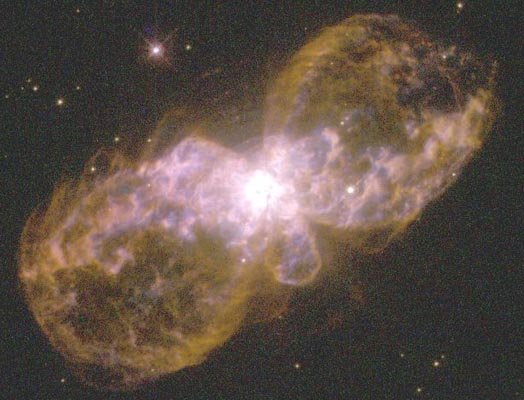
“The Hubble Double Bubble Planetary Nebula is bubbling over with excitement. More mundanely known as Hubble 5, this bipolar planetary nebula is being created by a hot wind of particles streaming away from the central star system. The hot gas expands into the surrounding interstellar medium in a fashion similar to the inflation of hot air balloons. A supersonic shock-wave can form at the boundary, causing newly excited gas there to shine as electrons recombine with resident elements. In the above picture, colors are assigned according to the energy of the recombinant radiation. This star system lies about 2200 light-years from Earth, and likely includes a Sun-like star slowly transforming itself into a white dwarf."
Copyright: Public domain
#946 Arachnoids on Venus January 20, 1998
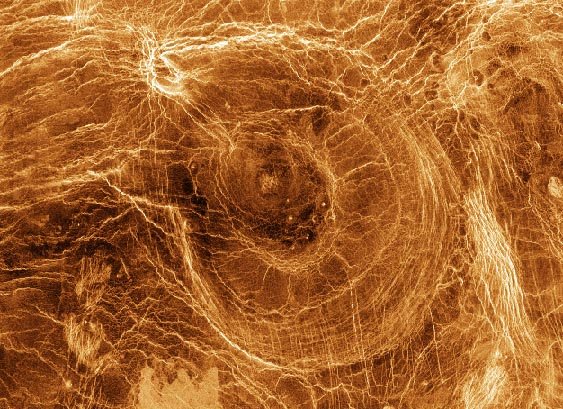
“Arachnoids are large structures of unknown origin that have been found only on the surface of Venus. Arachnoids get their name from their resemblance to spider-webs. They appear as concentric ovals surrounded by a complex network of fractures, and can span 200 kilometers. Radar echoes from the Magellan spacecraft that orbited Venus from 1990 to 1994 built up this image. Over 30 arachnoids have been identified on Venus, so far. The Arachnoid might be a strange relative to the volcano, but possibly different arachnoids are formed by different processes."
Copyright: Public domain
#947 Our Dusty Universe January 21, 1998
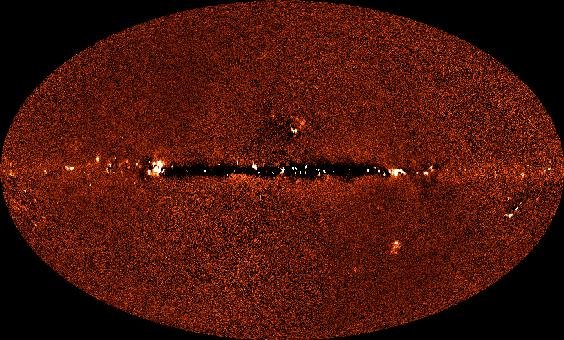
“What's black & white and red all over? Add our universe to this list. Adrift in a vast sea of darkness are not only familiar bright stars but dust that glows predominantly in far-infrared light. This cosmological dust was recently discovered in data taken previously by the COBE satellite, and visible as a diffuse glow visible in the above image. The amount of dust in the universe is important because it is a measure of the number of stars that created it, of the number of stars that are cloaked by it, and of the amount of distortion created in measurements of the distant universe."
Copyright: Public domain
#948 Closer To Beta Pic January 22, 1998
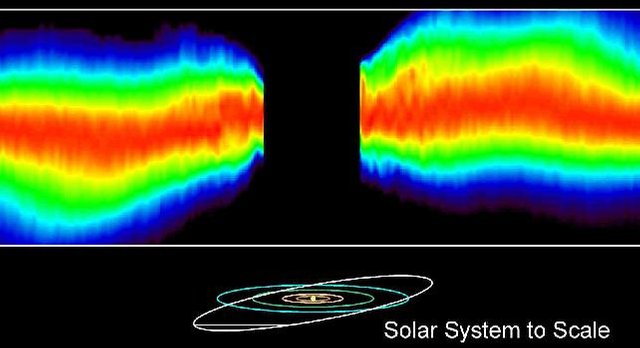
“What did our Solar System look like as the planets were forming? Since the 1980s, astronomers have been pointing toward Beta Pictoris, a young, sun-like star a mere 50 light-years distant, as a likely example. Beta Pic is surrounded by a disk of dust which we view nearly edge-on. The dust disk shines by reflected starlight and has been examined with ever increasing detail to search for signs of planetary formation. The trick is to follow the disk as close in to the star as possible, without being overwhelmed by the direct starlight. To make this Hubble Space Telescope image, a coronagraph was used to block the direct starlight and achieve the closest view yet. The false color picture shows the inner section of the dusty disk to within nearly 1.5 billion miles of the star itself, about the scale of the orbit of Uranus. The obvious warp is indirect evidence that a planet now orbits this young sun, slightly inclined to the disk. The planet's gravitational pull would produce the visible distortion."
Copyright: Public domain
#949 Jovian Aurora January 23, 1998
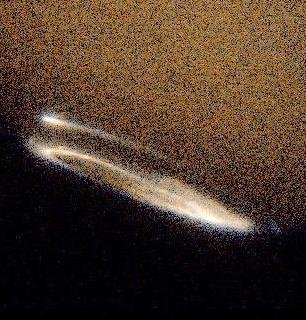
“These two recently released Hubble Space Telescope close-ups show the Northern and Southern lights ... on Jupiter. Like aurora on Earth, these Jovian aurora are caused by charged particles funneled into the atmosphere above the planet's North (right) and South poles by magnetic fields. But Jupiter's magnetic field is extremely large and ionized material expelled from the volcanic moon Io is trapped in it creating light shows 1,000 times more intense than Earth's auroral storms. Charged particles released by Io are also funneled along magnetic flux tubes which form a direct "bridge" to the Jovian atmosphere. The result is auroral hot spots - magnetic footprints 600 or more miles across which race over Jupiter's cloud tops. A hot spot is visible in both images as a comet-like feature just outside the polar auroral rings. In these false color ultraviolet images, Jupiter's limb (edge) appears dull brown while the auroral displays are shades of white and blue."
Copyright: Public domain
#950 The Large Cloud Of Magellan (LMC) January 24, 1998
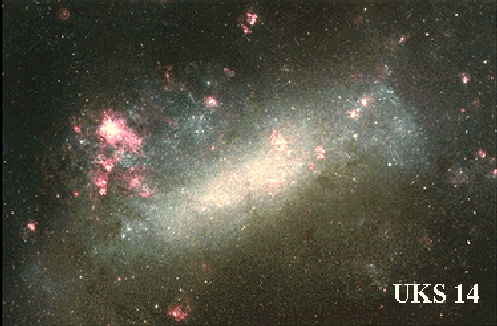
“Ferdinand Magellan and his crew had plenty of time to study the southern sky during their famous voyage around the world. As a result, two fuzzy cloud-like objects, not visible to northern hemisphere dwellers, are now known as the Clouds of Magellan. These star clouds are small irregular galaxies, satellites of our larger Milky Way spiral galaxy. The Large Magellanic Cloud (LMC) pictured above is only about 180,000 light-years distant - the only known galaxy closer is the Sagittarius Dwarf. Both the LMC and the Small Magellanic Cloud (SMC) are joined to the Milky Way by a stream of cold hydrogen gas. An unusual effect called gravitational lensing has recently been detected in a few LMC stars, and there is hope this could tell us important information about the true composition of our universe."
Copyright: AAOAATBROEUKS Telescope
#951 The Small Cloud of Magellan (SMC) January 25, 1998
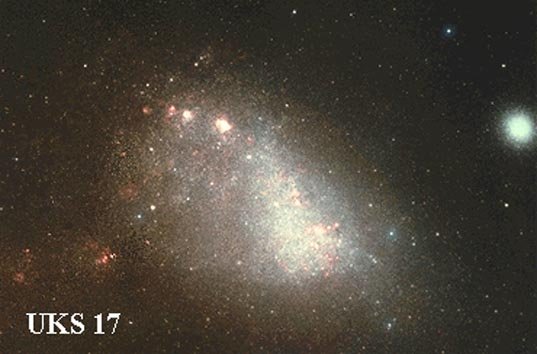
“Almost unknown to casual observers in the northern hemisphere, the southern sky contains two diffuse wonders known as the Magellanic Clouds. The Magellanic Clouds are small irregular galaxies orbiting our own larger Milky Way spiral galaxy. The Small Magellanic Cloud (SMC), pictured here, is about 250,000 light years away and contains a preponderance of young, hot, blue stars indicating it has undergone a recent period of star formation. There is evidence that the SMC is not gravitationally bound to the LMC."
Copyright: AAOAATBROEUKS Telescope
Upvote! Resteem! Comment! As you like it! Thank you for attention!